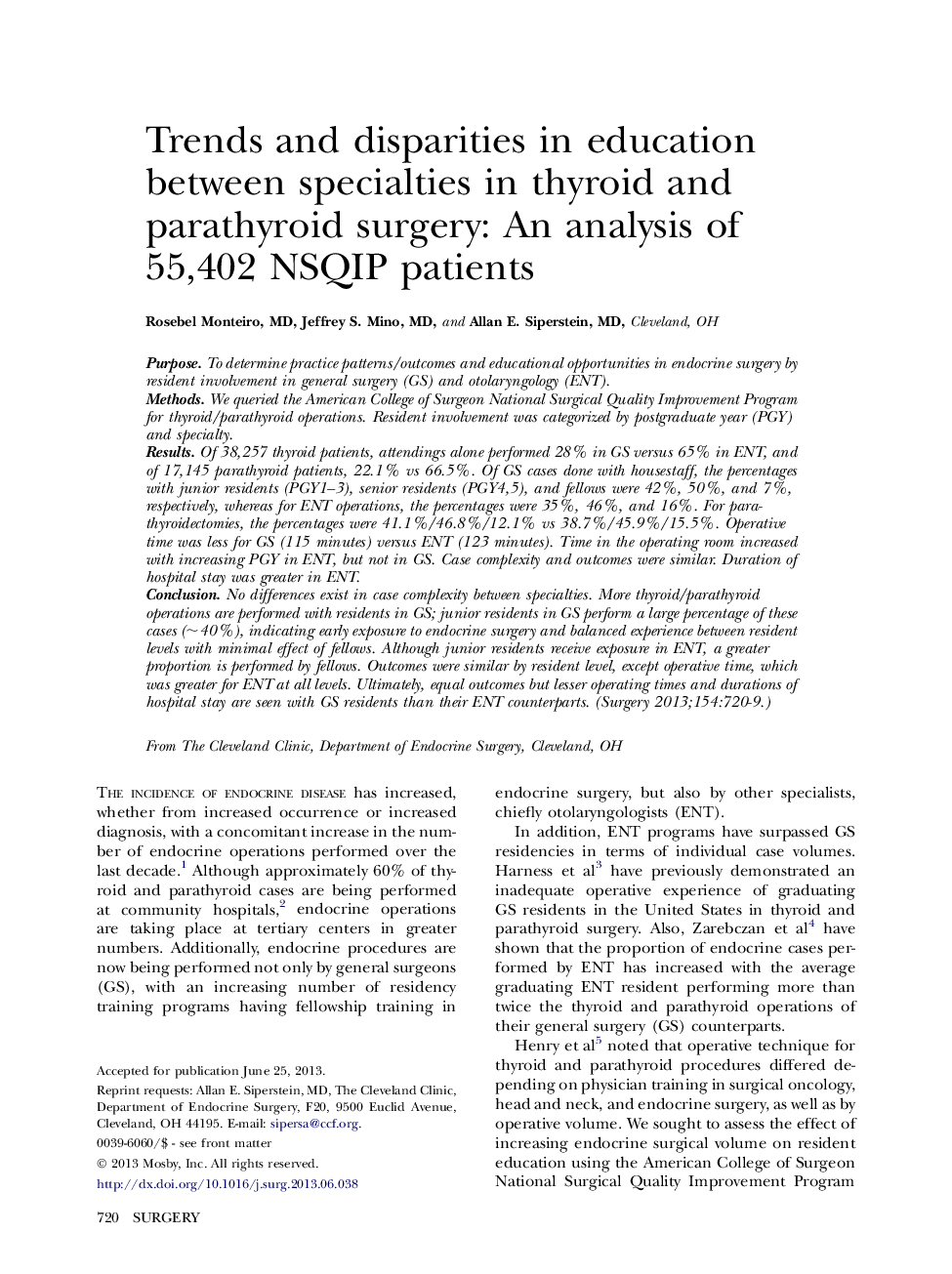| Article ID | Journal | Published Year | Pages | File Type |
|---|---|---|---|---|
| 4307541 | Surgery | 2013 | 10 Pages |
PurposeTo determine practice patterns/outcomes and educational opportunities in endocrine surgery by resident involvement in general surgery (GS) and otolaryngology (ENT).MethodsWe queried the American College of Surgeon National Surgical Quality Improvement Program for thyroid/parathyroid operations. Resident involvement was categorized by postgraduate year (PGY) and specialty.ResultsOf 38,257 thyroid patients, attendings alone performed 28% in GS versus 65% in ENT, and of 17,145 parathyroid patients, 22.1% vs 66.5%. Of GS cases done with housestaff, the percentages with junior residents (PGY1–3), senior residents (PGY4,5), and fellows were 42%, 50%, and 7%, respectively, whereas for ENT operations, the percentages were 35%, 46%, and 16%. For parathyroidectomies, the percentages were 41.1%/46.8%/12.1% vs 38.7%/45.9%/15.5%. Operative time was less for GS (115 minutes) versus ENT (123 minutes). Time in the operating room increased with increasing PGY in ENT, but not in GS. Case complexity and outcomes were similar. Duration of hospital stay was greater in ENT.ConclusionNo differences exist in case complexity between specialties. More thyroid/parathyroid operations are performed with residents in GS; junior residents in GS perform a large percentage of these cases (∼40%), indicating early exposure to endocrine surgery and balanced experience between resident levels with minimal effect of fellows. Although junior residents receive exposure in ENT, a greater proportion is performed by fellows. Outcomes were similar by resident level, except operative time, which was greater for ENT at all levels. Ultimately, equal outcomes but lesser operating times and durations of hospital stay are seen with GS residents than their ENT counterparts.
